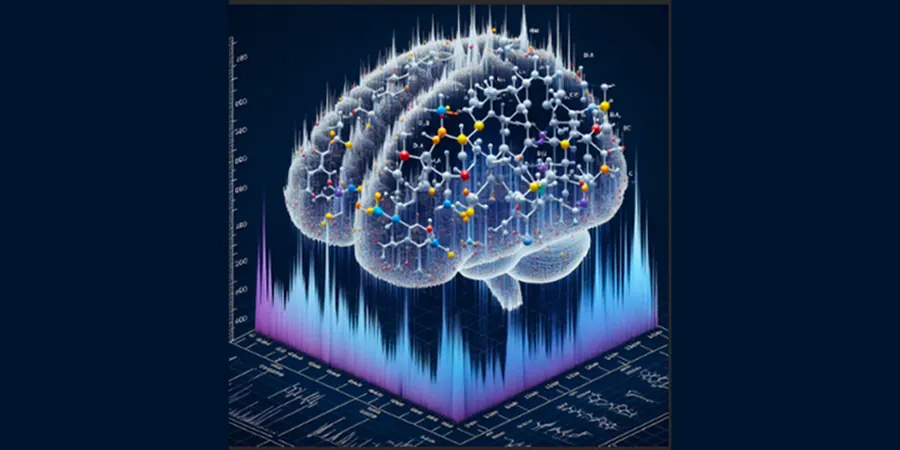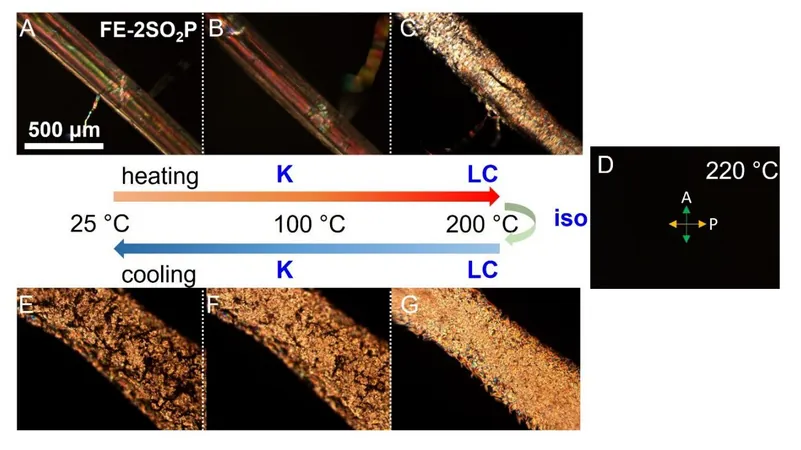
Unraveling the Darkness: Proteomic Discoveries in the Aging Brain Could Hold the Key to Defeating Neurodegenerative Diseases!
2025-01-21
Author: Wei
Introduction
Proteins are the unsung heroes of cellular functions, diligently performing tasks that are crucial for life. However, their dysfunction—whether due to misfolding, mutations, or improper activation—can lead to dire consequences, including neurodegenerative diseases like Alzheimer’s and Parkinson’s. Scientists are racing against time to decode the mechanisms through which aging disrupts protein function, hoping to develop interventions that may someday reverse these debilitating disorders.
The Role of Proteomics
At the heart of this research is proteomics—the comprehensive study of proteins, their structures, modifications, and roles within the body. Thanks to advancements in mass spectrometry, researchers can now examine proteins with unparalleled detail, bringing us closer to understanding their complex behaviors.
Dr. Uma Kanta Aryal's Research
Dr. Uma Kanta Aryal, a research associate professor at Purdue University, is leading the charge in this field. His recent study, published in the prestigious journal Molecular & Cellular Proteomics, focuses on the role of phosphorylation—one critical modification of proteins—in neurodegenerative diseases. Aryal’s journey into proteomics began in Japan during his Ph.D. studies, and he has since cultivated a dedicated program addressing the intersection of aging, senescence, and neurodegenerative pathology.
“Aging is a major risk factor for neurodegenerative diseases, and I saw a significant opportunity to contribute to this crucial area of research,” Aryal stated.
The Importance of Post-Translational Modifications
Cellular mechanisms are in place to both activate and deactivate proteins, ensuring that essential processes run smoothly and preventing malfunctions. However, modifications known as post-translational modifications (PTMs) are often overlooked, even though they play a critically important role in regulating protein activity.
“Many researchers focus solely on the abundance of proteins,” Aryal noted, “but it’s not just about how much protein is present; it’s about how these proteins are modified post-translation.”
Hyperphosphorylation and Disease
Phosphorylation is one such modification that has gained recognition for its involvement in disease. Hyperphosphorylation can lead to the abnormal activity of proteins, contributing to the pathogenesis of conditions like Alzheimer’s. Notably, the tau protein is infamous for forming neurofibrillary tangles that are characteristic of neurodegenerative diseases.
Aryal's Methodology
In his latest study, Aryal meticulously analyzed brain proteins from young, middle-aged, and old mice through a sophisticated multi-enzyme digestion approach combined with liquid chromatography–tandem mass spectrometry (LC–MS/MS). This powerful technique fragments proteins into simpler peptide pieces, allowing for the detection of subtle, previously hidden PTMs. Aryal’s keen observations revealed alterations in the phosphorylation patterns of key proteins linked to neurodegeneration.
“The modification of each residue comes with a precise reason,” he explained, excitement evident in his voice. “We’re not just identifying these markers; we’re characterizing them in depth. What are the dynamics of the phosphorylation? How do they interact with other modifications?”
Significant Findings in Aging Mice
In older mice, Aryal made significant findings regarding proteins like tau, Nefh, and Dpysl2, observing increased levels and activities of various kinases—enzymes that catalyze phosphorylation. While much has been mapped regarding tau’s phosphorylation sites, Aryal’s investigation unveiled two additional sites in aging mice that shift in their phosphorylation levels.
“It’s almost like an internal struggle within the tau protein itself,” he elaborated. “One area seems to promote disease progression, while another might counteract it. This dynamic interplay highlights the complexity of tau and its relationship with neurodegeneration.”
Future Research Directions
As aging continues to serve as a major risk factor for neurodegenerative diseases, Aryal’s insights into the intricate molecular mechanisms can pave the way for innovative therapies. His ongoing research aims to investigate lipid profile changes in the aging mouse brain, with plans to utilize genetically modified mice predisposed to Alzheimer’s or Parkinson’s in future proteomic studies. This approach promises to deepen our understanding of disease states, potentially unlocking the door to revolutionary treatments.
Conclusion
The implications of Aryal’s work are profound. As we glean insights into the molecular underpinnings of aging and disease, the hope grows that we can one day harness this knowledge to combat neurodegeneration and improve the quality of life for millions. The battle against Alzheimer’s and Parkinson’s may just be beginning, and the power of proteomics could be a key weapon in the arsenal.

 Brasil (PT)
Brasil (PT)
 Canada (EN)
Canada (EN)
 Chile (ES)
Chile (ES)
 Česko (CS)
Česko (CS)
 대한민국 (KO)
대한민국 (KO)
 España (ES)
España (ES)
 France (FR)
France (FR)
 Hong Kong (EN)
Hong Kong (EN)
 Italia (IT)
Italia (IT)
 日本 (JA)
日本 (JA)
 Magyarország (HU)
Magyarország (HU)
 Norge (NO)
Norge (NO)
 Polska (PL)
Polska (PL)
 Schweiz (DE)
Schweiz (DE)
 Singapore (EN)
Singapore (EN)
 Sverige (SV)
Sverige (SV)
 Suomi (FI)
Suomi (FI)
 Türkiye (TR)
Türkiye (TR)
 الإمارات العربية المتحدة (AR)
الإمارات العربية المتحدة (AR)